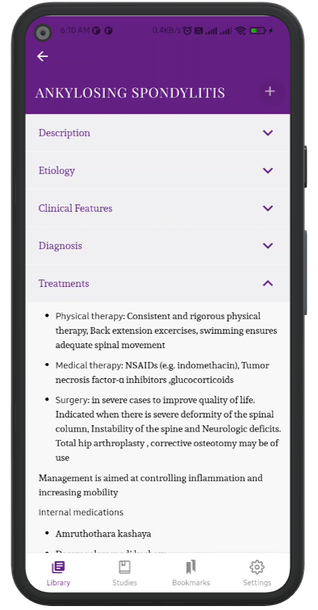PSORIASIS
Description
- Psoriasis is a common chronic disfiguring, inflammatory and proliferative epidermal skin disorder mediated by T cells and affecting individuals with underlying genetic predisposition. The time required for psoriatic epidermal cell to travel from the basal cell layer to the surface and be cast off is 3 to 4 days, in marked contrast to the normal of 26 to 28 days
- The typical lesions are sharply demarcated, erythematous, scaly, pruritic plaques which occur most often on the extensor surface of knees and elbows but may also affect the scalp and back
Types
- Most lesions of psoriasis are asymptomatic. Initially, a few single lesions typically appear, which then often become confluent. Lesions are seen mainly on the scalp, back, elbows, and knees (extensor surfaces) but any other site may be involved
- Erythematous papules and plaques characterize it. The lesions are of variable size, sharply circumscribed, dry, and usually covered with layers of silvery-white, micaceous scales
- Pruritus is seen in 80% of cases- usually mild, but may also be severe
- Its typical age of onset is in the third decade, though it may develop at any time from birth onward
- Nail involvement is common in 50% of psoriasis patients. The most frequent alteration of nail surface is the presence of pits. Nail matrix changes are pitting, longitudinal ridging, grooves, leukonychia, erythema of lunula, thickening of nails, crumbling of the nail plate, and trachyonychia
- Nail bed changes include subungual hyperkeratosis, distal onycholysis, Salmon (oil drop sign) patches, and splinchter haemorrhages. Paronychia results from the involvement of periungual skin of proximal nail fold with retention of scales between ventral nail fold and nail plate
- In severe cases, the disease may affect the entire skin and presents as psoriatic arthritis
Cutaneous variants
- Plaque psoriasis(psoriasis vulgaris) – most common variant characterized by symmetrically distributed thick, scaly, erythematous lesions
- Guttate psoriasis – occurs mainly in children and adolescents after streptococcal infection
- Inverses psoriasis – mainly affects skin folds and flexural creases of large joints
- Erythrodermic psoriasis – Generalised erythematous lesion with diffuse scaling
- Pustular psoriasis – rare, generalized erythroderma, white pustules all over the body
- Scalp Psoriasis - Erythematous plaques with silvery scales, usually cross hairline
- Palmoplantar psoriasis: erythema, thickening, peeling of the skin and pustules over the palms and soles
Differential Diagnosis
- Seborrheic dermatitis – In the scalp, lesions are lighter in colour, less well defined, covered with dull or branny, or greasy scales
- Pityriasis Rosea – Papular or annular eruption usually confined to upper arms, trunks, and thighs. Herald patch is followed by eruption with Christmas tree pattern
- Pityriasis rubra pilaris – resembles psoriasis, especially in the erythrodermic phase. Follicular accentuation, focal areas of sparing, sometimes more salmon colour, acquired palmoplantar keratoderma with yellow-orange tinge help to differentiate the condition clinically
- Tinea corporis – Itchy annular erythematous plaques with peripheral scaling
- Discoid lupus erythematosus – Discrete erythematous plaques on face and scalp associated with atrophy, scaling and alopecia
- Eczema – at times develop a psoriasiform appearance especially on the legs. Hyperkeratotic eczema of palms is a common cause of misdiagnosis
- Lichen Planus – Involves flexor surfaces. Pruritic purple flat-topped papules and plaques with scanty and tightly adherent scales
Investigation
- Mostly clinical
- Koebner phenomenon (Isomorphic response) - lesions may occur along the lines of trauma or scratch marks
- Auspitz’s sign is typical of Psoriasis. it consists of three components: Silvery white micaceous scales on scrapping, shiny membrane called Bulkley’s membrane on continued scrapping, bleeding points on removal of membrane
- Grattage test: involves scrapping a scaly lesion to look for type of scales. Silvery white micaceous scales are found
- Histopthology – shows Hyperkeratosis and parakeratosis, hypo or absent granular layer, regular acanthosis, thinning of the supra papillary portion of the epidermis
Treatments
Internal Medicines
- Patolamooladi Kashaya ( max 6 days)
- Patolakaturohinyadi kashaya
- Kulakadi kashaya
- Panchatiktakam kashayam
- Kaisora guggulu
- Arogyavardini vati
- Partharishta + Ashwagandharishta – reduce proliferation
- Abhayarishta + khadirarishta
- Sireesharishta
- Madhusnuhi rasayana
- Rasa sindoora- as rasayana therapy
Procedures
- Snehapana with Aragwadha mahatiktaka ghrita
- Vamana
- Virechanam with vellerugu tailam/ Nimbamruta eranda
- Aragwadhadi Takradhara
- Shashtika choorna + Paata leaves for udgarshana – reduces thickness of patches
- Shasthika taila abhyanga – reduces the thickness
- Shashtika pinda swedam – normalizes the skin texture
- Sudhadoorvadi keram - ext application
- Dinesheladi keram - ext application
- Neeli tailam - ext application
- Lajjalu kera - ext application
- Ayyapala kera - ext application
- Jeevanthyadi yamaka + shashthitka taila ext applicaion – in palmoplantar psoroasis
Department
Agada Tantra

